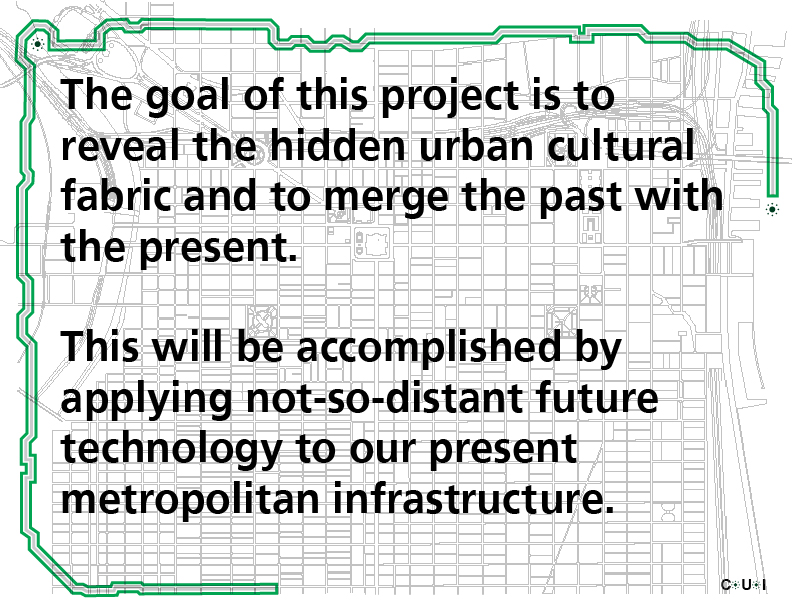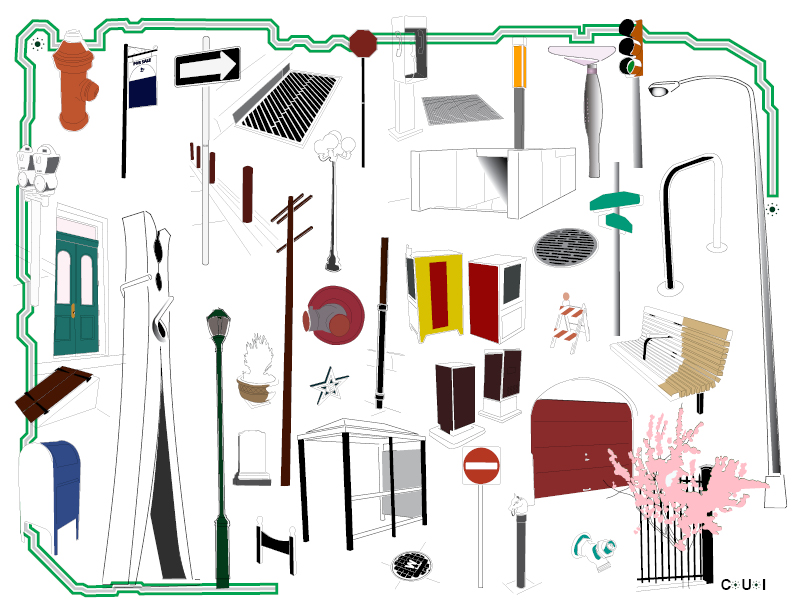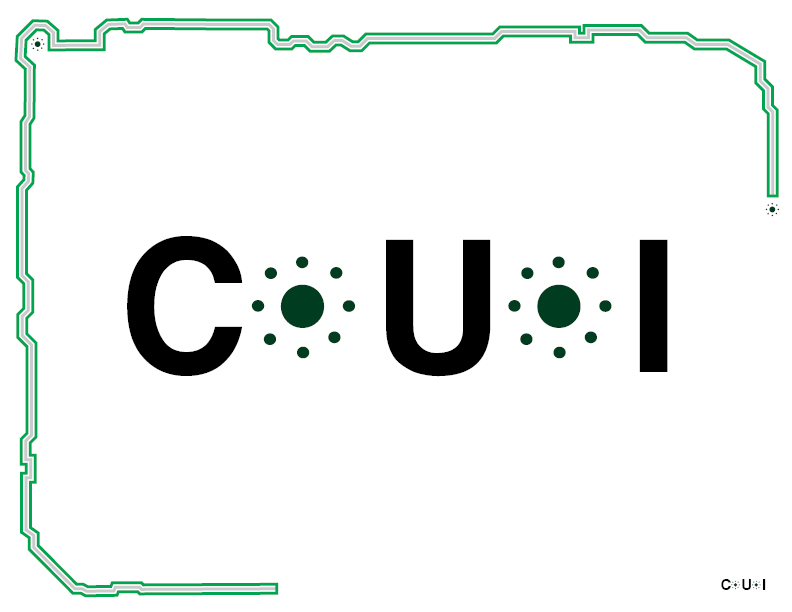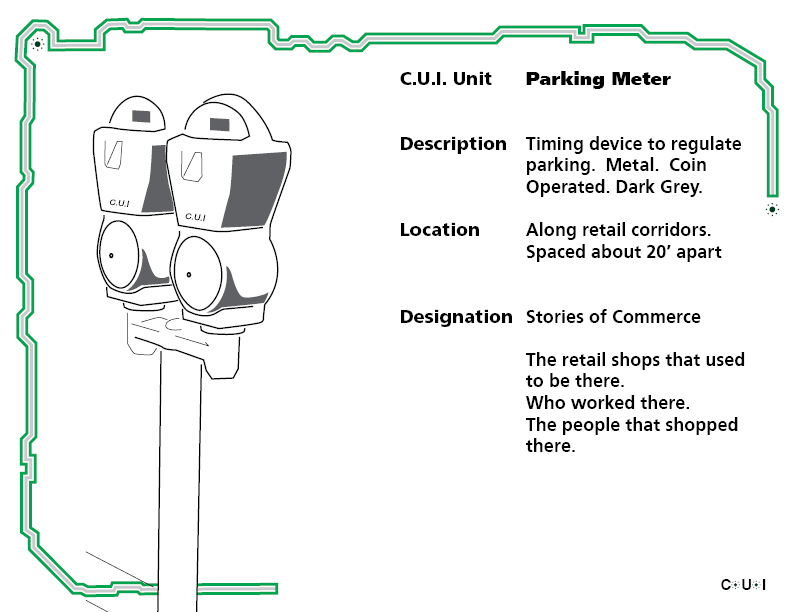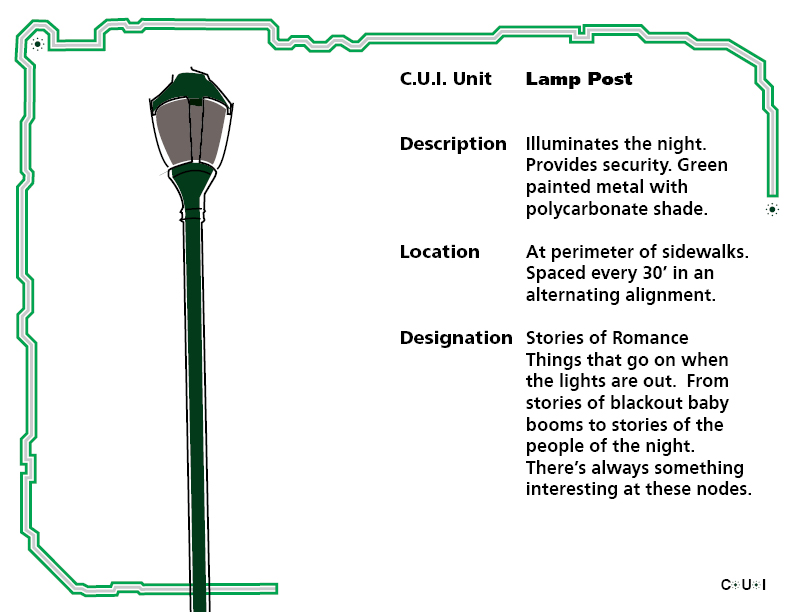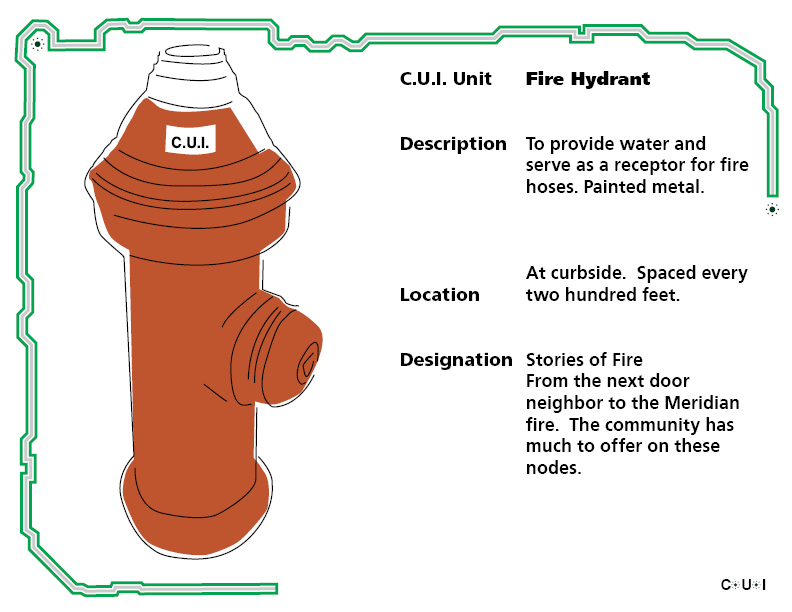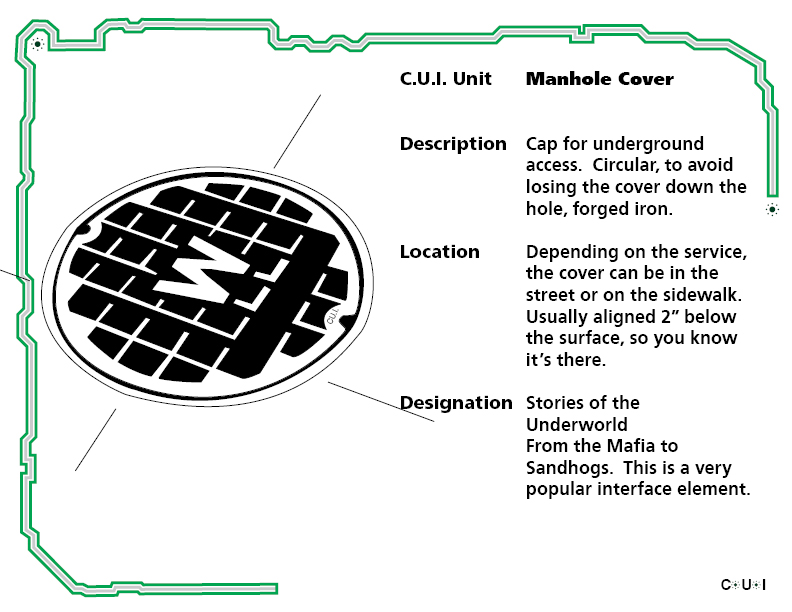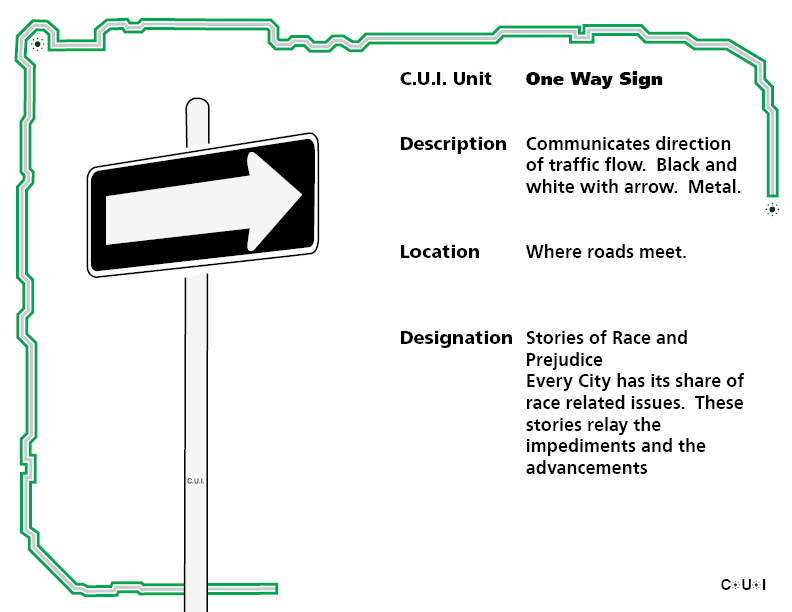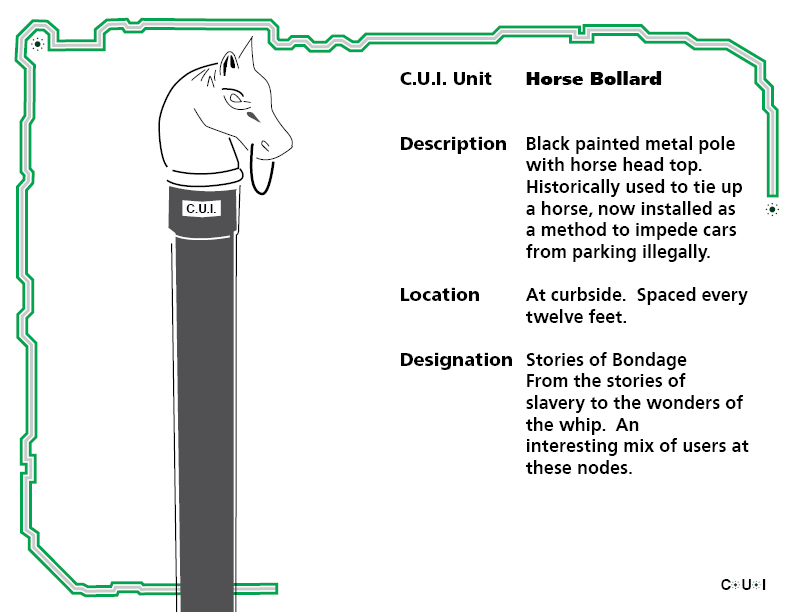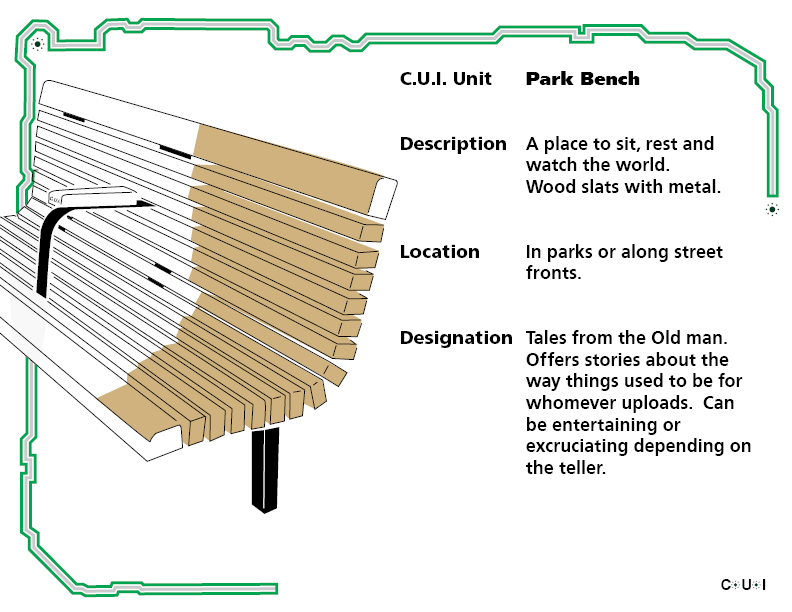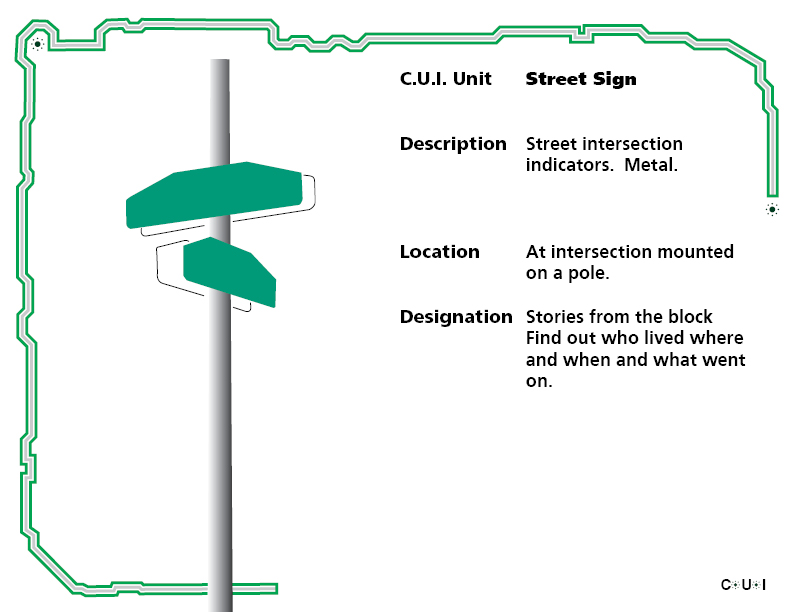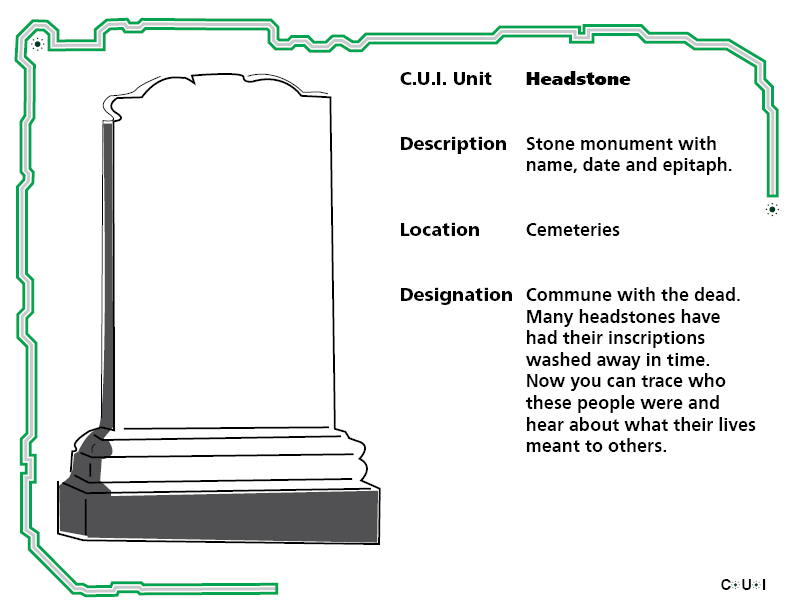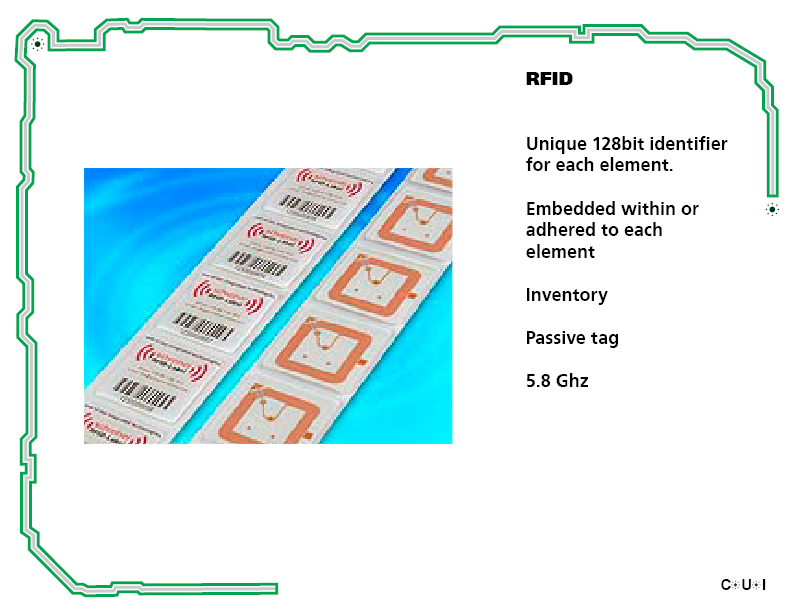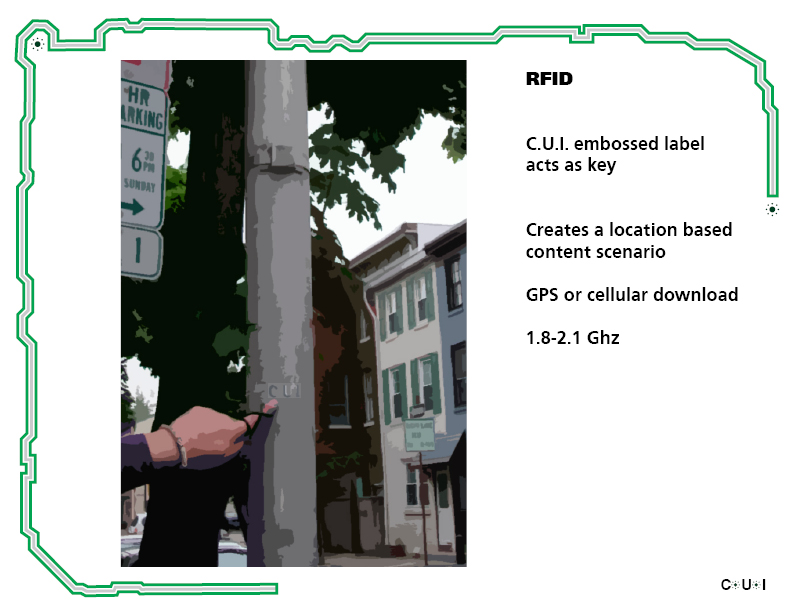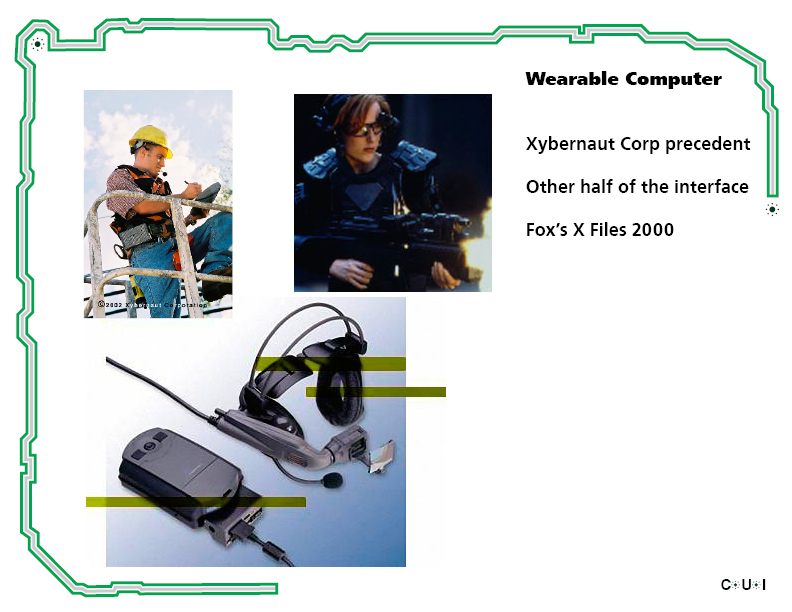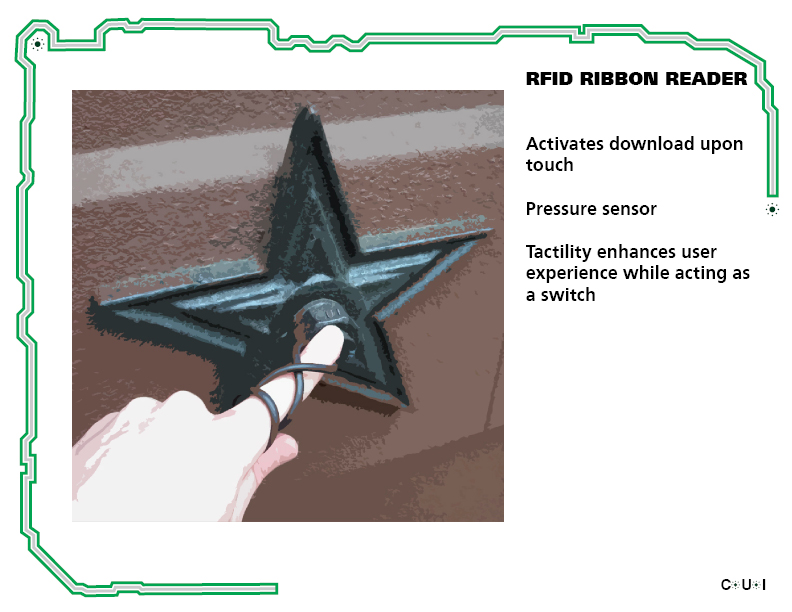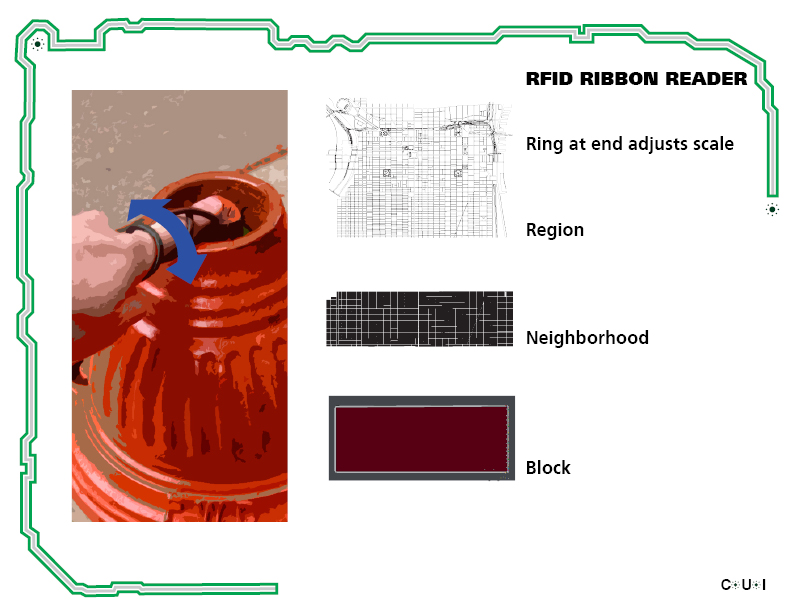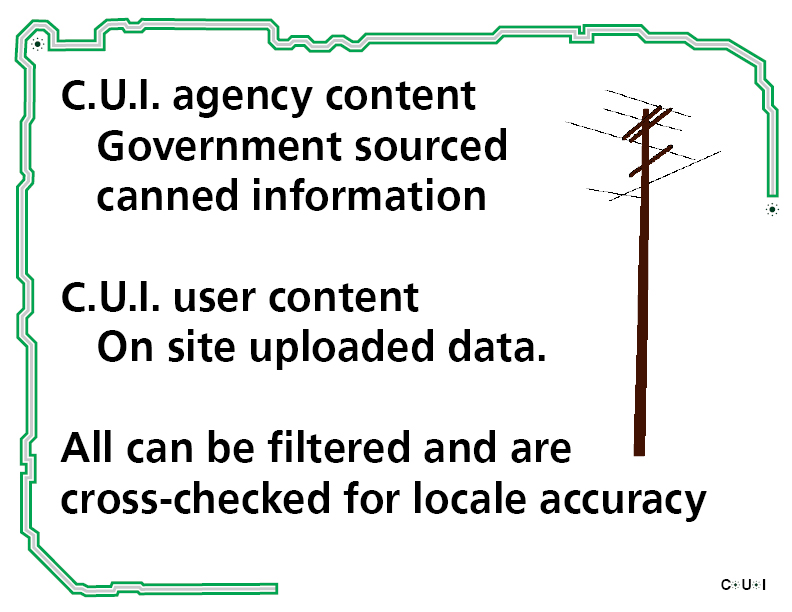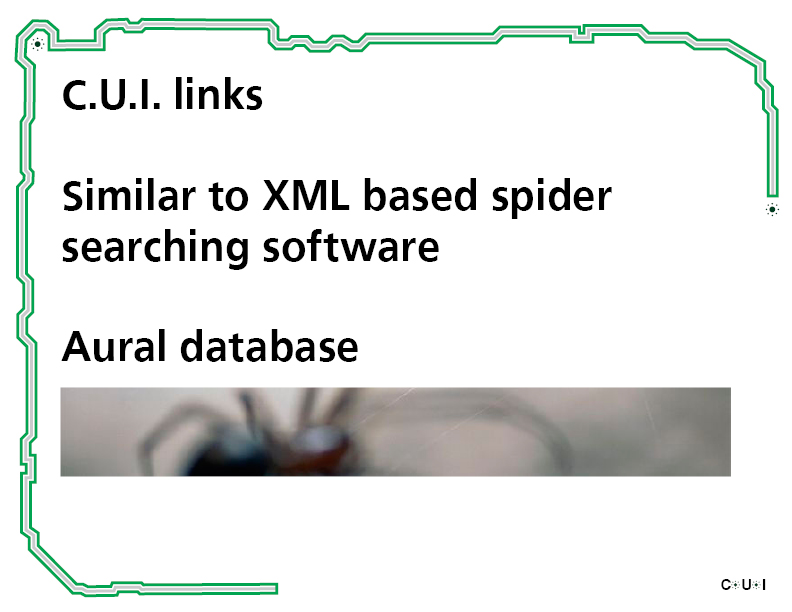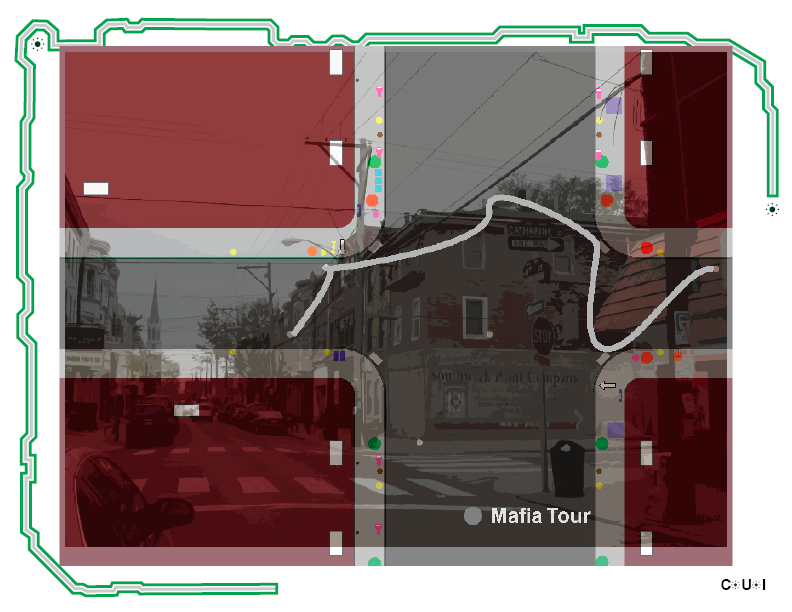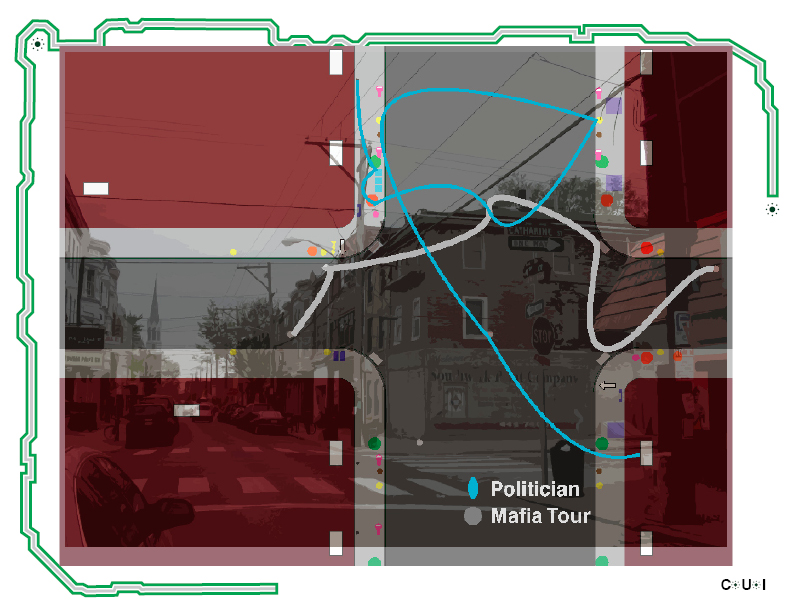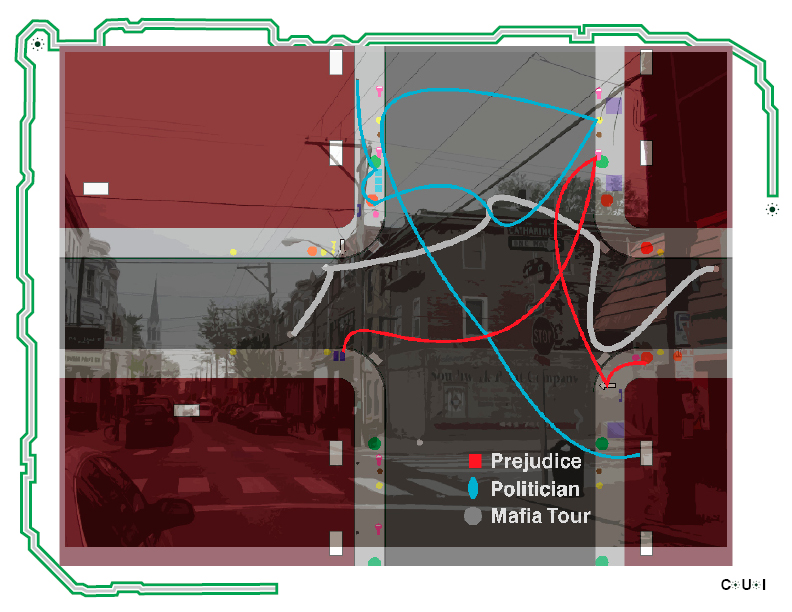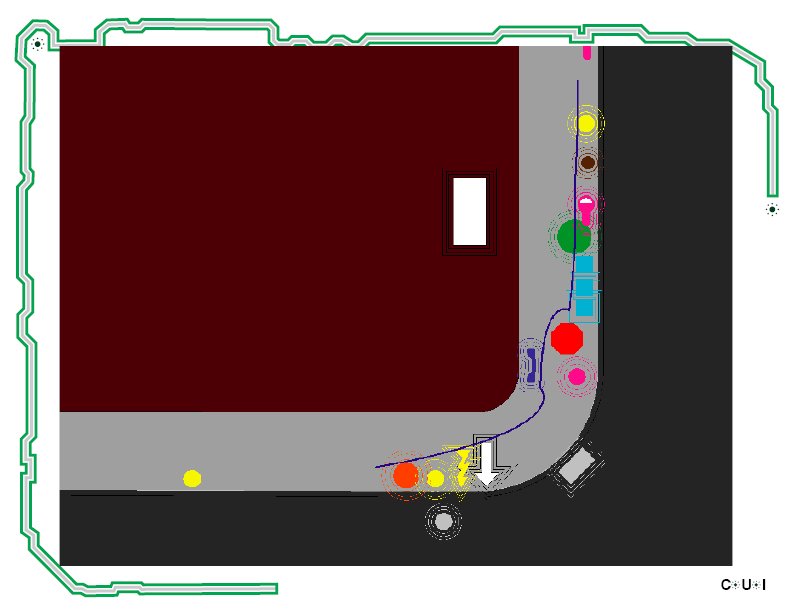CUI
The C.U.I. is a City User Interface which utilizes public infrastructure objects as nodes to weave a independently driven historical narrative. These narratives are the captured memories of everyday life from everyday citizenry which can serve as walking tours, investigative journeys or a four dimensional searchable urban database.
How many people know about Man Ray? The famous surrealist photographer who, like Alexander Calder III, worked primarily out of France. He grew up in Philadelphia at 4th and Catharine. You would not know that because there is nothing noting this cultural icon, the inventor of the photogram or Rayograph, within the city beside a few works at the Philadelphia Museum of Art—who I might add never made an effort to celebrate this local celebrity. Even Sardinia has a Man Ray cultural center.
What Philadelphia does do is place a few state sanctioned cultural heritage markers around the city. Notables include Louisa May Alcott, Edgar Allan Poe and John Coltrane. But the city does not have the funding nor the appropriate system to give justice to all of its historical figures.
But what about the lesser or unknown people of the city and their accomplishments; their lives. Take for instance life as an independent bar owner in the late 50’s. A guy had a bar at 20th and Norris in the Brewerytown section of Philadelphia. After a month of operation, two guys come in declaring that this facility comes under their jurisdiction for protection services. These services would be paid monthly at $200 and the beverages available for consumption would be limited to their distributor. The bar owner refused the service and asked them to leave his establishment. The next night, as the bar owner was closing shop, he noticed a fellow across the street with a shotgun in three parts at his side. The bar owner recognized the guy from the day before and immediately called the cops. The officers asked if the gun was assembled. Admitting no, the cops said it was legal, in the city of Philadelphia, to carry a shotgun in that manner. Needless to say, that evening the owner was driven home and simultaneously driven out of business. The bar was put up for sale the next day.
That was a story of the underworld that controlled much of the city, as well as others, during that time. What if you were interested in that world? Or the world of the bar owner. Or the history of that strorefront. Or the bar industry. One would have to scour books and city archives in order to retrieve that information. The goal of this project is to reveal this secret urban cultural fabric in order to merge the past with the present. This will be demonstrated by merging the not-so-distant future of our technology with our present urban infrastructure.
What is meant by urban infrastructure are the elements that dot our city streets standing dutifully awaiting to fulfill their purpose, often overlooked, with which we rarely interact. These include fire hydrants, manhole covers, parking meters, street lamps, bollards, bike racks, street signs, stop signs, one way signs to name a few. These are usually vernacular designs, yet global in their proliferation. A trash can here may be of expanded wire mesh, a clear bag strapped to a metal hoop in Paris or a perforated stainless steel drum in Cologne, but a receptacle for garbage nonetheless.
These elements are the interface of the city. They would serve as a cast of characters, providing themed content within the urban fabric. The system would be called a City User Interface or C.U.I. and due to the standardized nature of these elements a visitor familiar with their home network could easily adapt to other C.U.I.s around the world.
The information specific content would be as follows:
A parking meter-due to its location along retail corridors it would offer stories by and from people that shopped at that location.
A lamp post-would offer stories of things that occur at night, whether it be tales of romance or about people who operate solely at night.
A fire hydrant-would tell stories about fire. Whether it be stories about your neighbor’s house going up in flames, or about a friend that lost their life fighting a fire.
A manhole cover-would offer stories from the Underworld. One could imagine South Philadelphia receiving an influx of tourists curious about the seedy side of life.
A oneway sign is black and white with a forced direction. They would reveal instances of race and prejudice whether it be advancements or impediments.
A horse bollard-Similarly, these elements which were initially designed to tie up your horse now share stories of bondage. Stories from the whip—from slavery to S&M. For further information on slavery see the basement doors to hear stories about the underground railroad.
Bike rack-Tales of crime. Stories ranging from a past bank heist to murder .
Park bench-Tales from the old man. Listen to the experiences of one person told as if at a parkside chat.
Street sign-All about the block. Hear about the residents and activities of the local neighborhood.
Trash can-Trash talk. Gossip, rumors and confessions. Get it off your chest and leave it here.
Honor boxes-Politics, politics, politics. Listen to the district’s political changes and local editorial responses.
In the near future we will always be connected. Consistently turned on, if you will. Technology will be running in the background while you go about your daily business. The C.U.I. uses a few technological components.
Each infrastructure component has a Radio Frequency Identification tag. A RFID is a tiny data storage chip which is currently used for the tracking of goods in the manufacturing and distribution industry. For example a shelf in a retail establishment would contact a supplier when the product runs low. A tiny tag, about the size of a sand grain with a half inch long coiled antenna, is embedded in each product. The C.U.I. uses the same format. The RFID would be a passive device, which means that the reader provides the power revealing its 128bit code. The C.U.I. would be provided by a city agency and would either be specially adhered to infrastructure or bonded upon installation.
For example a one way sign would be embossed with a C.U.I. label that has the RFID underneath. Once scanned, the directed content would be downloaded to your auditory device. The RFID acts as the key to unlock the messages within. Therefore, in order for the system to work one must be at the location where the content is linked. Either a GPS or cellular network would translate your coordinates to the device and transmit the desired content.
The content would be provided by two sources. The C.U.I. agency would provide canned content and load it to a central server. This type of information could be filtered in or out. Content could be provided by users on-site at a particular infrastructure element. The C.U.I. system would record the data, cross check its infrastructure for accuracy and then create the necessary links.
These links work similarly to an internet with spider type software aurally searching the content and then establishing networks. Since, this will eventually be a large database, methods to search and filter are required.
Depending on the area of interest your wearable device will have a set of preferences that it has learned from your previous searches. Also, one can just search the various infrastructure nodes. For example if you are only interested in hearing stories of fire related disasters the hydrant tour is the way to go. The network can also do searchable terms, such as people, numbers, places etc. In a person search scenario, the user would be able to walk in the footsteps of that person experiencing the city as they knew it. Or like surfing the web, a user can surf the city going from one linked path to the next.
In order to know what elements are linked to your subject matter a system element is needed to reveal that path. In this case, queries are presented to traffic lights and stop signs. The elements are located at literal crossroads within the urban grid and therefore serve as wayfinders.
Most likely you will have a wearable computer on your person which is the other half of the interface. This device would display the networks previously mentioned, download and upload content and provide the equipment necessary to hear/see the past. Wearable computers exist and are primarily used for difficult repair work. For example, a phone repairman needs a wiring diagram, but does not have the free hand to hold the diagram. The headset provides the necessary data as a graphic overlay. In this image, Dana Scully from the X-files is using a device from the company Xybernaut to fight a virtual femme fatale.
One piece of the wearable computer could be a RFID reading ribbon which transmits the code only when the C.U.I. is touched. A pressure sensor would signal the download or upload to occur. The tactile element enhances the C.U.I. experience. A rotating ring at the base of the ribbon adjusts for scale: block, neighborhood or region.
A user could forego the RFID ribbon and choose to immerse themselves in the C.U.I. A RFID detector located on the person would load selected content when within a radius of the infrastructure. Walking through the city under the immersion setting could provide fascinating tours. Or if the selection is specific, and the system is always on, a detection might occur out of thin air while on an errand.

